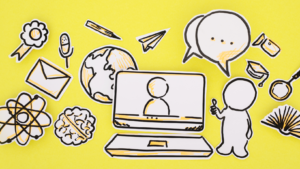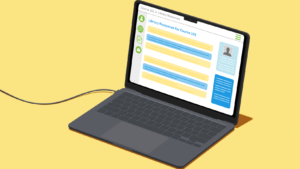School libraries are essential in fostering a love of reading and critical thinking, and when paired with classroom instruction, the impact can be even greater. A fantastic example of this collaboration is a Genre Exploration Project, designed for middle school students. In this project, the school librarian partners with English teachers to help students explore different literary genres over a 3-4 week period. This constructivist-inspired project encourages students to connect their prior reading experiences with new knowledge about genres while developing critical thinking and creativity.
Project Overview: Genre Exploration
Grade Level: Middle School
Collaborating Departments: Library & English
Duration: 3-4 weeks
Objective: To teach students to identify, compare, and analyze literary genres while deepening their understanding through personal connections and creative expression.
Week 1: Project Introduction and Book Selection
The project begins with a joint lesson taught by both the librarian and the English teacher. They introduce the concept of literary genres and explain the objectives of the project. The students are prompted to reflect on their own reading preferences, thinking about the kinds of books they’ve enjoyed and why.
With the guidance of both the librarian and the teacher, students explore the library to select two books—one from a genre they are familiar with and another from a genre that is new to them. This step is designed to expand their literary experience while giving them a comfortable starting point.
Week 2: Genre Research and Class Discussion
In the second week, students dive into research. Using library resources like genre-specific book displays, digital catalogs, and curated book lists, students learn about the defining characteristics of various genres. They take notes on elements like common themes, plot structures, and character types.
A key part of this week is a class discussion or Socratic seminar, where students share their findings and insights with their peers. By participating in these discussions, students connect their personal reading choices with new genre knowledge, creating a collaborative learning experience.
Week 3: Reading and Venn Diagram Comparison
Over the next two weeks, students begin reading their selected books, both in class and as homework. They also keep reading logs or reflective journals, where they document genre-specific elements and how these align with their research.
During this time, students work on creating a Venn diagram that compares the two genres based on key elements like plot, setting, character development, and tone. This comparative exercise encourages critical thinking and helps students bridge their prior knowledge with their new understanding of genres.
Week 4: Creative Project and Presentation
In the final week, students showcase their learning through a creative project. They are given two options:
- Create an alternative book cover for the book in the unfamiliar genre, highlighting the genre’s defining characteristics and how the cover could appeal to a specific audience.
- Write a creative book summary or synopsis that focuses on the genre’s unique elements and how the book fits within those parameters.
The project concludes with student presentations, where they share their creative work and explain their reasoning. This allows students to practice public speaking while reinforcing what they have learned about the genres.
Why This Project Works
The Genre Exploration Project is a collaborative effort that makes use of constructivist principles, allowing students to connect their prior reading experiences with new learning. By partnering with English classes, the project incorporates a combination of independent research, group discussions, and creative assignments, giving students the opportunity to engage deeply with the material.
This project not only helps students develop literary analysis skills, but it also broadens their appreciation of different genres. The creative component at the end allows students to express their learning in a fun and meaningful way. Moreover, the collaboration between the library and the classroom offers a well-rounded, engaging project that enhances students’ critical thinking and love for reading.
Edstablished, created by educator and digital media expert Taylor Jennings, shares insights on education, technology, and libraries. With a focus on EdTech, digital citizenship, and instructional design, Edstablished supports educators in creating engaging learning experiences.






No comment yet, add your voice below!